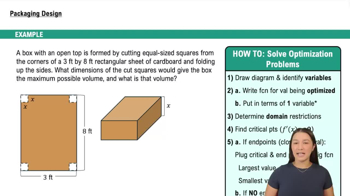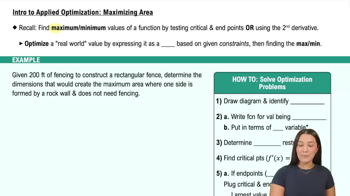Suppose S = x + 2y is an objective function subject to the constraint xy = 50, for x > 0 and y > 0.
b. Find the absolute minimum value of S subject to the given constraint.
 Verified step by step guidance
Verified step by step guidance Verified video answer for a similar problem:
Verified video answer for a similar problem:



 1:13m
1:13mMaster Intro to Applied Optimization: Maximizing Area with a bite sized video explanation from Patrick
Start learning